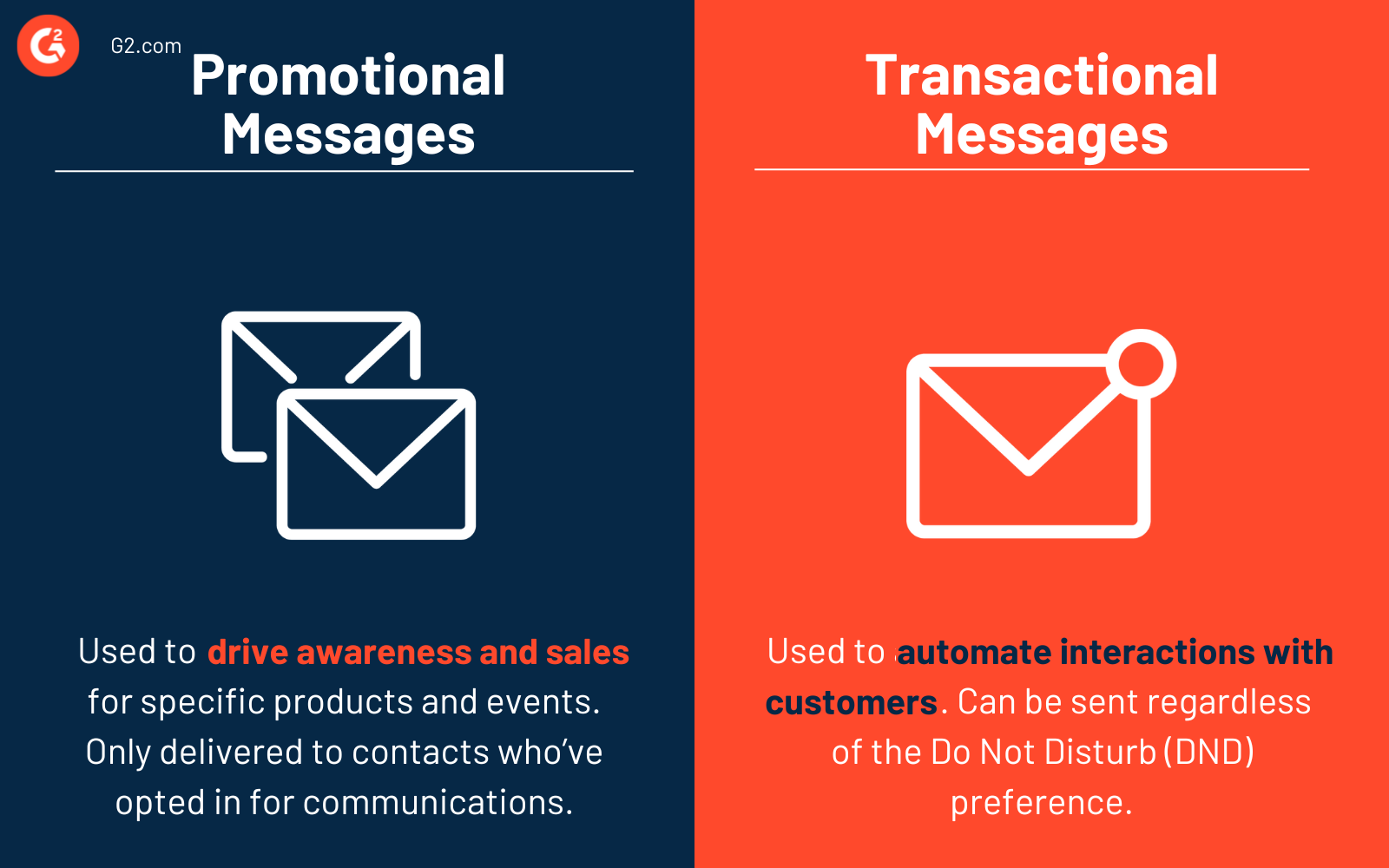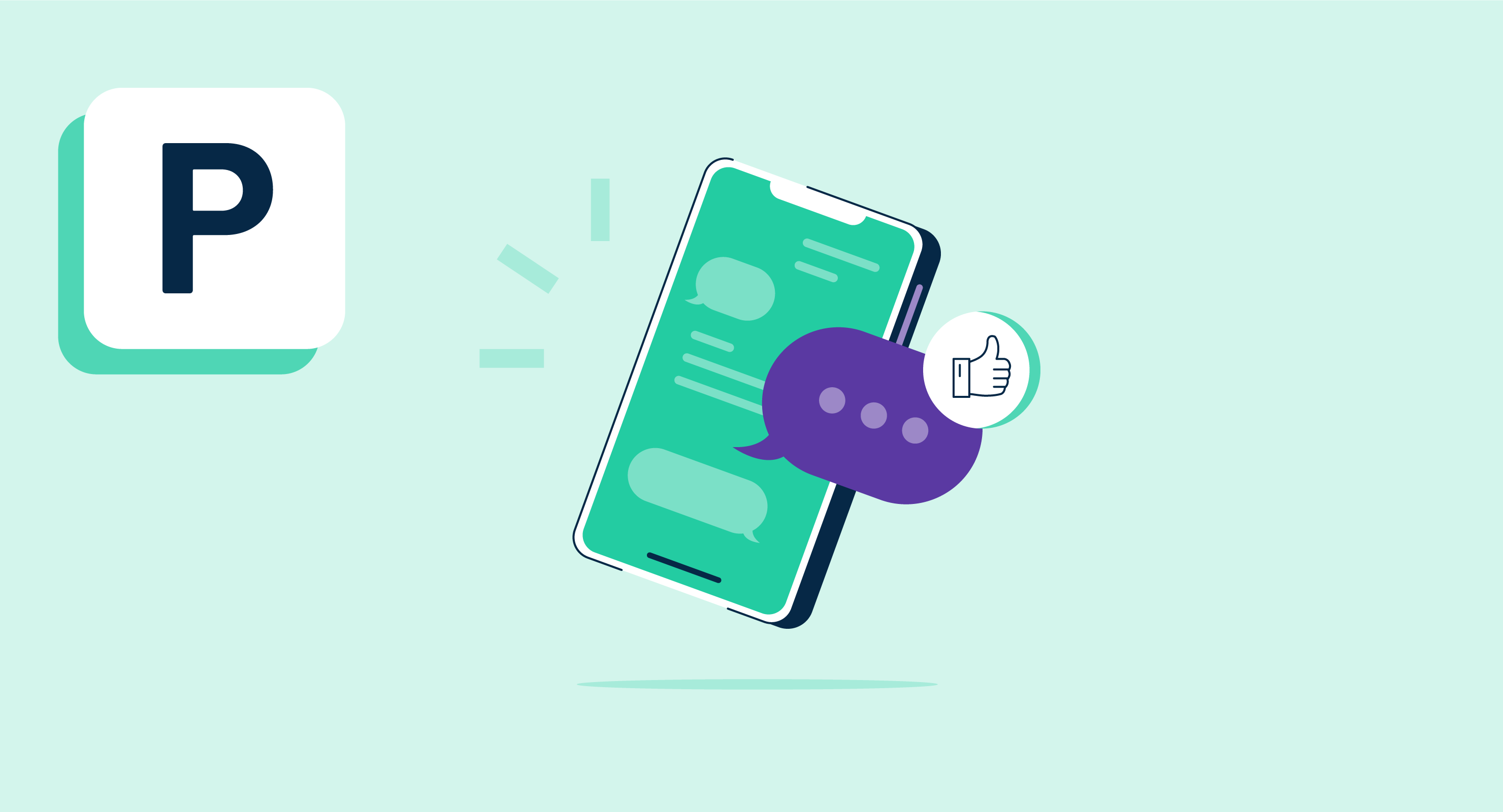What is a promotional message?
Businesses use promotional messages or promotional texts to drive awareness through push notifications and text messages or short message services messages (SMS messages). It’s a great way to promote a specific product or event related to a product, like discounts, offers, and coupons. Promotional messages are therefore considered to be a type of text marketing.
Since businesses send promotional messages primarily through texts, using SMS marketing software helps marketers create custom messages and automate their delivery for an efficient SMS marketing campaign performance.
Types of promotional messages
Some of the different types of promotional messages or promotional SMS campaigns that users usually receive:
- New product/service announcement
- Discount codes
- Conversational SMS
- Limited-time period or flash sales
- Rewards program updates
- Advertisements and marketing messages
Benefits of promotional messages
Promotional messages, or text message promotions, are effective marketing strategies generating consumer interest through direct communication. They provide many benefits to organizations. Some of them are:
- Creating consistent campaigns: Promotional campaigns involve creating and delivering messages over a continuous period of time. This generates a brand recall in customers’ minds, building an association that would improve conversion rates over time.
- Crisper messaging: Promotional messages need to be short to fit a character limit. This allows for concise messaging that gets the point across immediately. Customers who receive such messages can scan the message almost instantly.
- Enabling quicker actions: Promotional messages sent through SMS are relayed in seconds. Since an SMS is concise, receivers can read the message in minutes and take immediate action. As opposed to emails that could take hours or days to open, an SMS is seen and opened in a smaller time frame.
- Sending bulk campaigns: Bulk promotional SMS enables businesses to reach a large contact list simultaneously without needing personalization. This is an advantage over cold calls and emails that require some effort and customization.
- Higher conversion rate: Compared to other marketing channels, like email marketing, promotional text messages have higher open rates and conversion rates.
- Higher ROI: Promotional SMS is an easy, flexible, and affordable method of communicating with customers. It offers a high return on investment (ROI) since it only requires access to a phone carrier service and shows a higher volume of results.
How to send promotional messages
Here are nine steps marketing teams can take to send promotional text messages to their audience:
- Create an account with an SMS provider or phone carrier
- Purchase or rent a phone number, SMS plan, and sender ID
- Create a contact list of potential customers and prospects for brand awareness or remarketing purposes
- Set up an SMS marketing platform
- Upload the contact list along with each prospect’s details to the platform
- Create a bulk promotional message SMS campaign and set up the delivery notifications system
- Select the format of the campaign (text messages, push notifications, WhatsApp chats, and so on.)
- Schedule the campaign and send it to the recipients using automation
- Monitor campaign performance
Best practices for creating promotional messages
Several factors can boost the effectiveness of promotional text campaigns. Here are a few tactics that marketers should consider to create compelling promotional messaging:
- Craft condensed messages: A good rule of thumb for promotional messages is to keep them short and within a couple of sentences. Longer messages might contain more information, but they can be annoying to a receiver reading on a small chat window.
- Establish a clear identity: Contacts don’t normally store a business’ number on their phones, so it’s important to include some form of identification within the message to ensure that your contacts know who they’re communicating with.
- Control the frequency of promotional campaigns: A good promotional campaign doesn’t overwhelm recipients with incessant notifications. Keep a fixed number of promotional messages ready and create a schedule where each campaign is spaced out.
- Have a clear call to action (CTA): A clear CTA encourages users to take action. Not adding a CTA or burying it in text can be a frustrating experience for customers and prevent them from accomplishing a business goal.
- Refrain from shortening links: Links are often used as CTAs in promotional messages. While shortening links can seem like a good idea, phone carriers may view these as suspicious elements and flag them as spam.
- Remain compliant: The Telephone Consumer Protection Act of 1991 (TCPA) regulates text messages and phone carriers. Different types of SMS consent fall under this act. Sending promotional campaigns to contacts who haven't opt-in goes against TCPA compliance. Staying on top of TCPA practices and being compliant help companies prevent any legal ramifications.
Promotional messages vs. transactional messages
There are many examples of text messages. Broadly speaking, there are types of messages, namely, promotional messages and transactional messages, which are often confused with being similar.

The two differ as follows:
Promotional messages are primarily used to drive awareness and sales for specific products and events. They’re used for marketing purposes and initiated by the business. Promotional messages are only delivered to contacts who’ve opted in for communications in the preference center.
Transactional messages or transactional SMS, on the other hand, are used to automate interactions with customers. They’re used to move prospects along a customer journey and initiated by the customer. These can be sent regardless of the Do Not Disturb (DND) preference.

Ninisha Pradhan
Ninisha is a former Content Marketing Specialist at G2. She graduated from R.V College of Engineering, Bangalore, and holds a Bachelor's degree in Engineering. Before G2, Ninisha worked at a FinTech company as an Associate Marketing Manager, where she led Content and Social Media Marketing, and Analyst Relations. When she's not reading up on Marketing, she's busy creating music, videos, and a bunch of sweet treats.





















